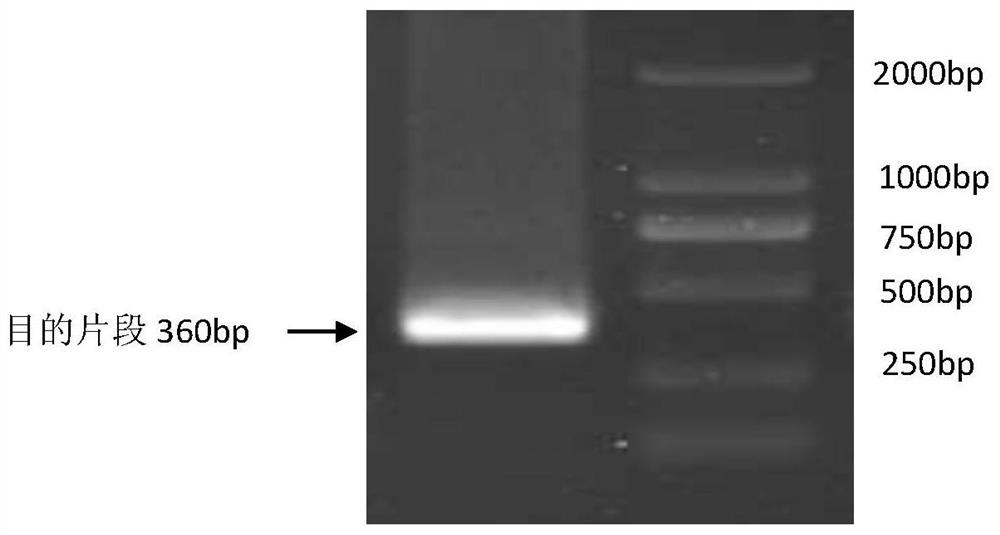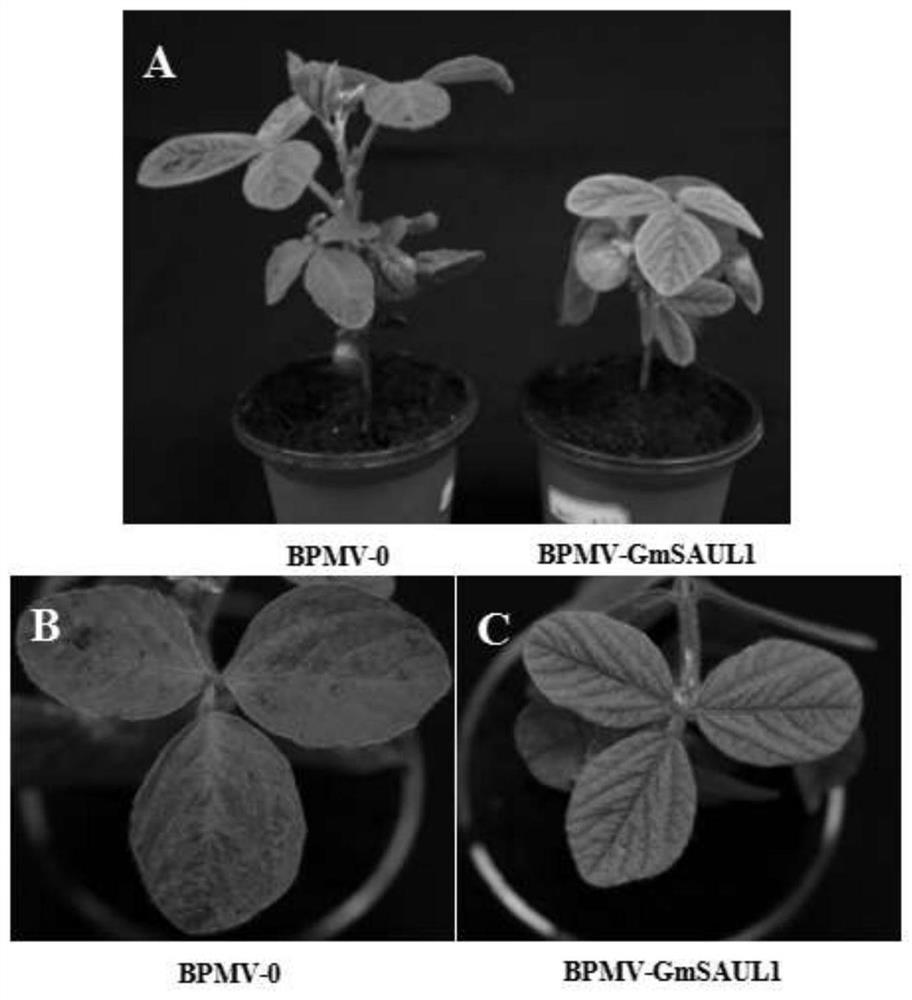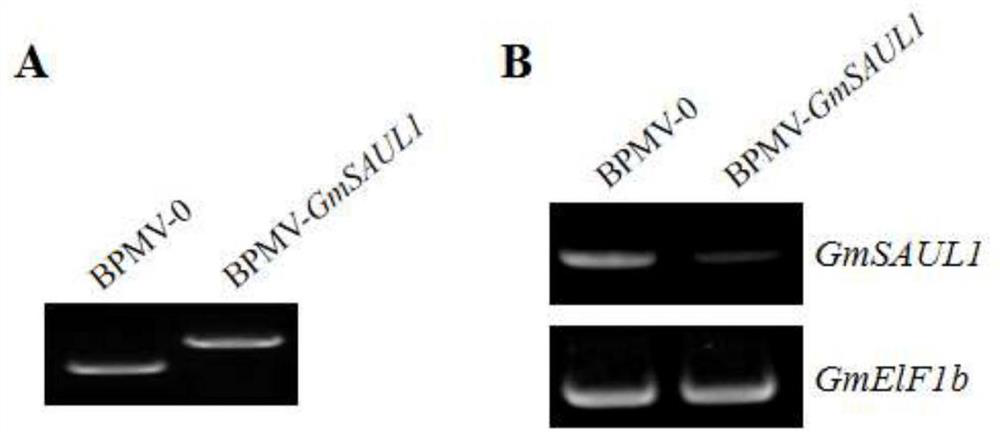Application of disease-resistant gene Glyma.04G016500.1 of soybean
A technology of disease resistance gene and soybean mosaic virus is applied in the field of genetic engineering to achieve the effects of improving disease resistance, simple synthesis method and high synthesis efficiency
- Summary
- Abstract
- Description
- Claims
- Application Information
AI Technical Summary
Problems solved by technology
Method used
Image
Examples
Embodiment 1
[0066] Example 1, Glyma.04G016500.1 disease resistance gene sequence synthesis
[0067] 1. Extraction of total RNA, using the Trizol method to extract total RNA:
[0068] (1) Get the leaves of soybean seedling plants, cut the leaves of the plants into pieces, remove the petioles and thicker veins, put them into a mortar pre-cooled in liquid nitrogen, add liquid nitrogen to the mortar and grind to powder, and The powder was transferred to a 1.5 mL centrifuge tube cooled in liquid nitrogen.
[0069] (2) Add 1mL Trizol to a 1.5mL centrifuge tube, and vortex the centrifuge tube. After shaking for a while, open the cap and deflate the centrifuge tube to prevent the air pressure in the centrifuge tube from increasing and causing the liquid to splash, thereby obtaining a grinding liquid .
[0070] (3) Put the obtained grinding solution into a new centrifuge tube, and put the centrifuge tube filled with the grinding solution on a centrifuge for centrifugation. The temperature of the...
Embodiment 2
[0107] Example 2, construction of BPMV-Glyma.04G016500.1 vector:
[0108] 1. Enzyme digestion system of vector BPMV-RNA1
[0109]
[0110] Place the centrifuge tube in a 37°C water bath for enzyme digestion for 3 hours, and then perform purification, that is, add 3 volumes of Buffer PCR-A to the PCR, enzyme digestion, enzyme labeling, or sequencing reaction solution (if Buffer PCR-A is insufficient 100 μL, add to 100 μL); after mixing, transfer to a DNA preparation tube, place the DNA preparation tube in a 2 mL centrifuge tube, centrifuge at 12,000 rpm for 1 min, and discard the filtrate. Put the preparation tube back into the 2mL centrifuge tube, add 0.7mL Buffer W2, centrifuge at 12000rpm for 1min, and discard the filtrate. Place the preparation tube in a clean 1.5mL centrifuge tube, add 20 μL ddH to the center of the DNA preparation membrane 2 O, stand at room temperature for 1 min. Centrifuge at 12000rpm for 1min to elute DNA.
Embodiment 3
[0135] Embodiment 3, gene bombardment creates soybean silent plant
[0136] 1. Preparation of microprojectiles
[0137] (1) Weigh 3 mg of gold powder (0.6 μm in diameter) and put it into a 1.5 mL centrifuge tube;
[0138] (2) Add 50 μL of absolute ethanol to the centrifuge tube, and vortex for 2-3 minutes;
[0139] (3) Place the vortexed centrifuge tube in an ice bath for 5 minutes and allow the gold powder to settle, centrifuge at 10,000 rpm for 30 seconds, and discard the supernatant;
[0140] (4) Repeat (2), (3) steps 2 times;
[0141] (5) Add 50 μL sterile water to the centrifuge tube, vortex for 2-3 minutes, and fully resuspend;
[0142] (6) Place the centrifuge tube in an ice bath for 5 minutes, centrifuge at 10,000 rpm for 30 seconds, and discard the supernatant;
[0143] (7) Repeat (5), (6) steps 2 times;
[0144] (8) Add 50 μL of sterile water to the centrifuge tube, vortex for 1 min, and store at -20°C.
[0145] 2. DNA embedding
[0146] (1) Put the microproje...
PUM
 Login to View More
Login to View More Abstract
Description
Claims
Application Information
 Login to View More
Login to View More - R&D
- Intellectual Property
- Life Sciences
- Materials
- Tech Scout
- Unparalleled Data Quality
- Higher Quality Content
- 60% Fewer Hallucinations
Browse by: Latest US Patents, China's latest patents, Technical Efficacy Thesaurus, Application Domain, Technology Topic, Popular Technical Reports.
© 2025 PatSnap. All rights reserved.Legal|Privacy policy|Modern Slavery Act Transparency Statement|Sitemap|About US| Contact US: help@patsnap.com



